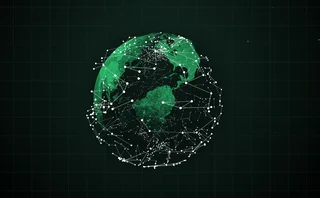
Data corruption fastest cause of disruption for businesses
Causal analysis shows data corruption to be the fastest growing cause of business disruption after more than doubling in 2008
"These findings, combined with growth in the uptake of hosting and managed services, suggest that more companies are building resilient environments but are failing to appreciate that corruption in one database will be replicated to the failover site," said Keith Tilley managing director UK and executive vice-president, Europe, for SunGard Availability Services. "Companies must take care not to confuse a resilient infrastructure for one that mitigates the risk of data loss, as this simply isn't the case. Disaster recovery is no less relevant today than it has ever been. The most progressive IT departments are now incorporating recovery processes into offsite data vaulting solutions to help ensure the integrity of their data. They appreciate that if they don't, corrupted data might come to light in the event of an emergency recovery, potentially compounding an already serious situation. In today's climate, lost data can easily translate into lost customers."
With power and flooding issues accounting for 32% of invocations in 2008, the logs also identify the growing threat to businesses in 2009 of man-made power and flood incidents. As the recession brings about major changes across UK businesses with companies moving in and out of offices, and an increase in empty office space, SunGard advises extra care should be taken to prevent maintenance works impacting on power and water infrastructure. Leaking pipes or faulty air conditioning can cause major damage to IT equipment, while contractors cutting through power cables, or temporarily disconnecting power sources, can cause huge disruption. Similarly, when the economy does start to recover, there is the strong chance of a wave of mergers of acquisitions, which can present major risks to availability and continuity, if change management is not deployed as systems are switched over and processes aligned.
Only users who have a paid subscription or are part of a corporate subscription are able to print or copy content.
To access these options, along with all other subscription benefits, please contact info@risk.net or view our subscription options here: http://subscriptions.risk.net/subscribe
You are currently unable to print this content. Please contact info@risk.net to find out more.
You are currently unable to copy this content. Please contact info@risk.net to find out more.
Copyright Infopro Digital Limited. All rights reserved.
You may share this content using our article tools. Printing this content is for the sole use of the Authorised User (named subscriber), as outlined in our terms and conditions - https://www.infopro-insight.com/terms-conditions/insight-subscriptions/
If you would like to purchase additional rights please email info@risk.net
Copyright Infopro Digital Limited. All rights reserved.
You may share this content using our article tools. Copying this content is for the sole use of the Authorised User (named subscriber), as outlined in our terms and conditions - https://www.infopro-insight.com/terms-conditions/insight-subscriptions/
If you would like to purchase additional rights please email info@risk.net
More on Technology
Dismantling the zeal and the hype: the real GenAI use cases in risk management
Chartis explores the advantages and drawbacks of GenAI applications in risk management – firmly within the well-established and continuously evolving AI landscape
Chartis RiskTech100® 2024
The latest iteration of the Chartis RiskTech100®, a comprehensive independent study of the world’s major players in risk and compliance technology, is acknowledged as the go-to for clear, accurate analysis of the risk technology marketplace. With its…
T+1: complacency before the storm?
This paper, created by WatersTechnology in association with Gresham Technologies, outlines what the move to T+1 (next-day settlement) of broker/dealer-executed trades in the US and Canadian markets means for buy-side and sell-side firms
Empowering risk management with AI
This webinar explores how artificial intelligence (AI) can strip out the overheads and effort of rapidly modelling, monitoring and mitigating risk
Core-Payments for business leaders: why real-time access to payment data is key to long‑term business success
Business leaders require easy access to timely, reliable and complete information across post-trade processes. Aside from the usual requirements of senior managers to optimise for risk, revenues and costs, they increasingly need to demonstrate to their…
Risk applications and the cloud: driving better value and performance from key risk management architecture
Today's financial services organisations are increasingly looking to move their financial risk management applications to the cloud. But, according to a recent survey by Risk.net and SS&C Algorithmics, many risk professionals believe there is room for…
Machine learning models: the validation challenge
Machine learning models are seeing increasing demand across the capital markets spectrum. But how can firms improve their chances of gaining internal and regulatory approval for these type of models?
Most read
- Top 10 operational risks for 2024
- Top 10 op risks: third parties stoke cyber risk
- Japanese megabanks shun internal models as FRTB bites







